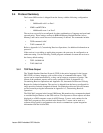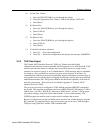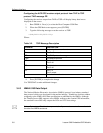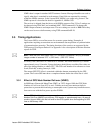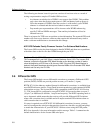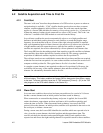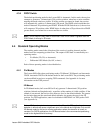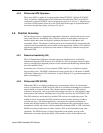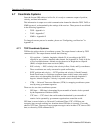
Lassen-SK8 Embedded GPS Module 4-1
4 Operation and Performance
This chapter describes the Lassen-SK8 satellite acquisition and tracking processes,
performance characteristics and system architecture. This discussion assumes that you are
familiar with the basic theory of the Global Positioning System. Before proceeding to the
detailed discussion of the satellite acquisition and tracking process, please review the GPS
satellite message description on the next page.
The Lassen-SK8 satellite acquisition and tracking algorithms can achieve a position
solution without any initialization. The receiver automatically selects and tracks the best
combination of satellites to compute position and velocity. As satellites move out of view,
the Lassen-SK8 automatically acquires new satellites and includes them in the solution set
as required.
4.1 GPS Satellite Message
Every GPS satellite transmits the Coarse/Acquisition (C/A) code and satellite data
modulated onto the L1 carrier frequency (1575.42 MHz). The satellite data transmitted by
each satellite includes a satellite almanac for the entire GPS system, its own satellite
ephemeris and its own clock correction.
The satellite data is transmitted in 30-second frames. Each frame contains the clock
correction and ephemeris for that specific satellite, and two pages of the 50-page GPS
system almanac. The almanac is repeated every 12.5 minutes. The ephemeris is repeated
every 30 seconds.
The system almanac contains information about each of the satellites in the constellation,
ionospheric data, and special system messages. The GPS system almanac is updated
weekly and is typically valid for months. The ephemeris contains detailed orbital
information for a specific satellite. Ephemeris data changes hourly, but is valid for up to
four hours. The GPS control segment updates the system almanac weekly and the
ephemeris hourly through three ground-based control stations. During normal operation,
the Lassen-SK8 module updates its ephemeris and almanac as needed.
The performance of a GPS receiver at power-on is determined largely by the availability
and accuracy of the satellite ephemeris data and the availability of a GPS system almanac.



